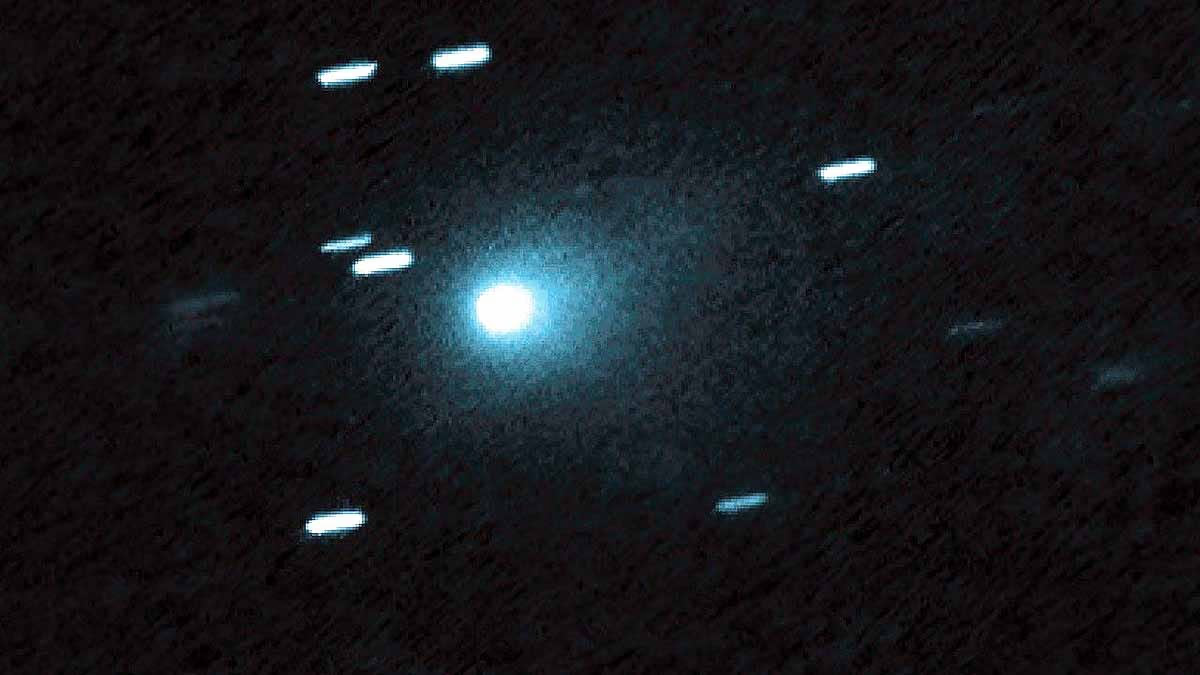Imagine a luminous star journeying from another celestial system, nearing the sun, and suddenly turning blue. This is 3I/ATLAS, our third interstellar comet, discovered by NASA's ATLAS telescope in July 2025. On October 29, 2025, it approached the sun’s closest point at 203 million kilometers, intensifying its brightness by 16 times and acquiring a blue sheen. Harvard scientist Avi Loeb suggests that an unusual force might be at play. Is it a purely natural comet or an alien technology?
Named 3I as it is the third interstellar object, following Oumuamua (2017) and Borisov (2019), detected in July 2025 from a telescope in Chile. Scientists were quick to observe it had journeyed from beyond our solar system. It zooms at a remarkable speed of 30 kilometers per second, with dimensions comparable to Manhattan.
Orbiting the sun, it appeared affected by forces beyond mere gravity. NASA assured it poses no threat to Earth. The comet will draw its closest to our planet on December 19, 2025, at a distance of 269 million kilometers.
Reaching its closest solar point (perihelion) at 7:47 AM on October 29, 2025, a magical transformation seemed to occur. Brightness soared 16-fold, escalating its blue hue. Unlike typical comets that redden as dust disperses near the sun, why did this turn blue?
Captivating images captured by NASA's STEREO, SOHO, and GOES satellites revealed its shining retreat from behind the sun. An X post speculated carbon gas emissions are responsible, casting a blue hue. Yet, the cause of such intense illumination remains 'unclear'.
Harvard astronomer Avi Loeb heralded it as 'breaking news', noting an unexpected lateral push in addition to outward thrusts. Should gas emissions cause this, the comet risks losing half its mass. Identifying nine anomalies, Loeb speculates a 40% probability of alien origin.
In a video on X, Loeb explains the comet's atypical behavior, urging not to dismiss strange data—it could be a cosmic message. While Loeb stops short of making definitive claims, these inquiries provoke thought.
Most scientists perceive it as an ordinary comet, with melting ice (sublimation) contributing to observed changes. The blue appearance emerges as gas, not dust, emerges. On X, one user humorously conjectured if it were a spacecraft, it's an impressive mimic of a comet. NASA confirmed its natural status, ruling out alien implications. However, with an estimated age of about 9 billion years, twice that of our solar system, its tale beguiles.
Having reemerged from the sun’s shadow, NASA's PUNCH mission captured initial images. ESA's JUICE spacecraft will monitor it with myriad devices from November 2-25, 2025. A celestial observer hinted at a Venusian morning sky appearance, promising insights into its structure and origins.
3I/ATLAS expands our understanding of the vast and mysterious cosmos. Natural or otherwise, it offers a glimpse beyond our stellar neighborhood. As scientists like Avi Loeb continue probing with unrelenting curiosity, new discoveries await.




